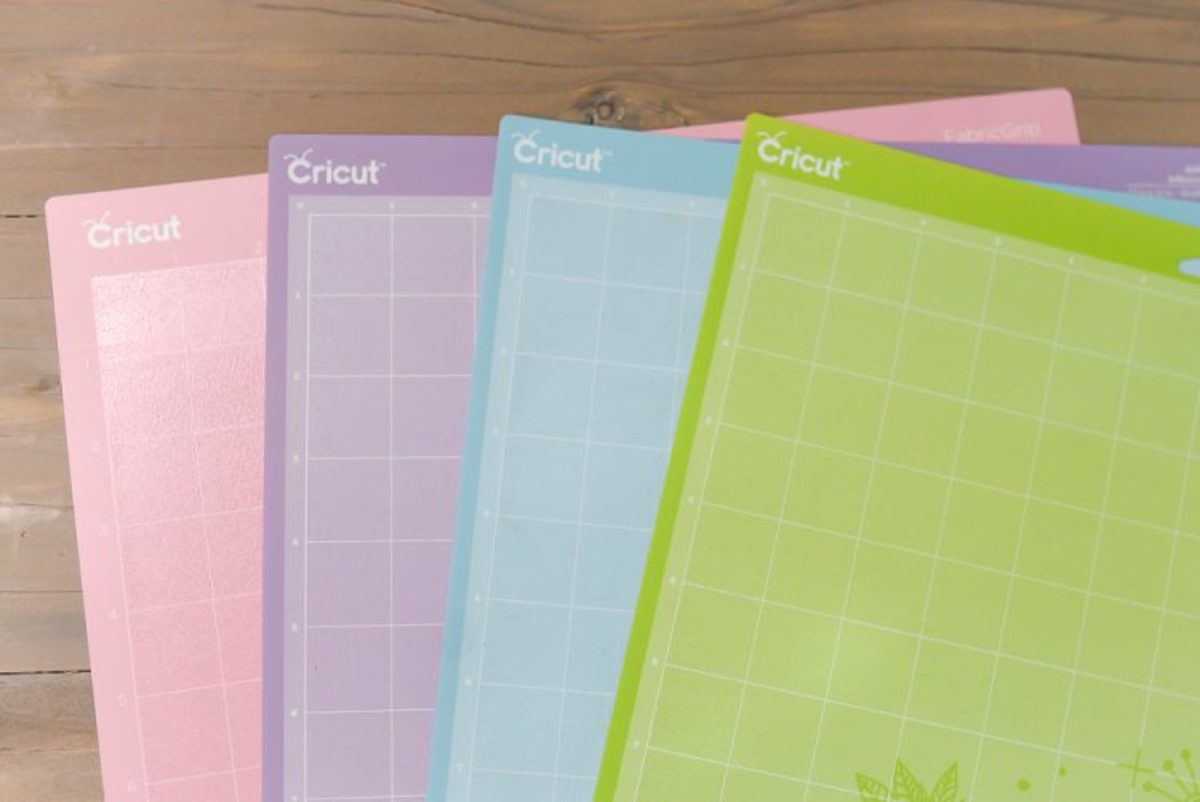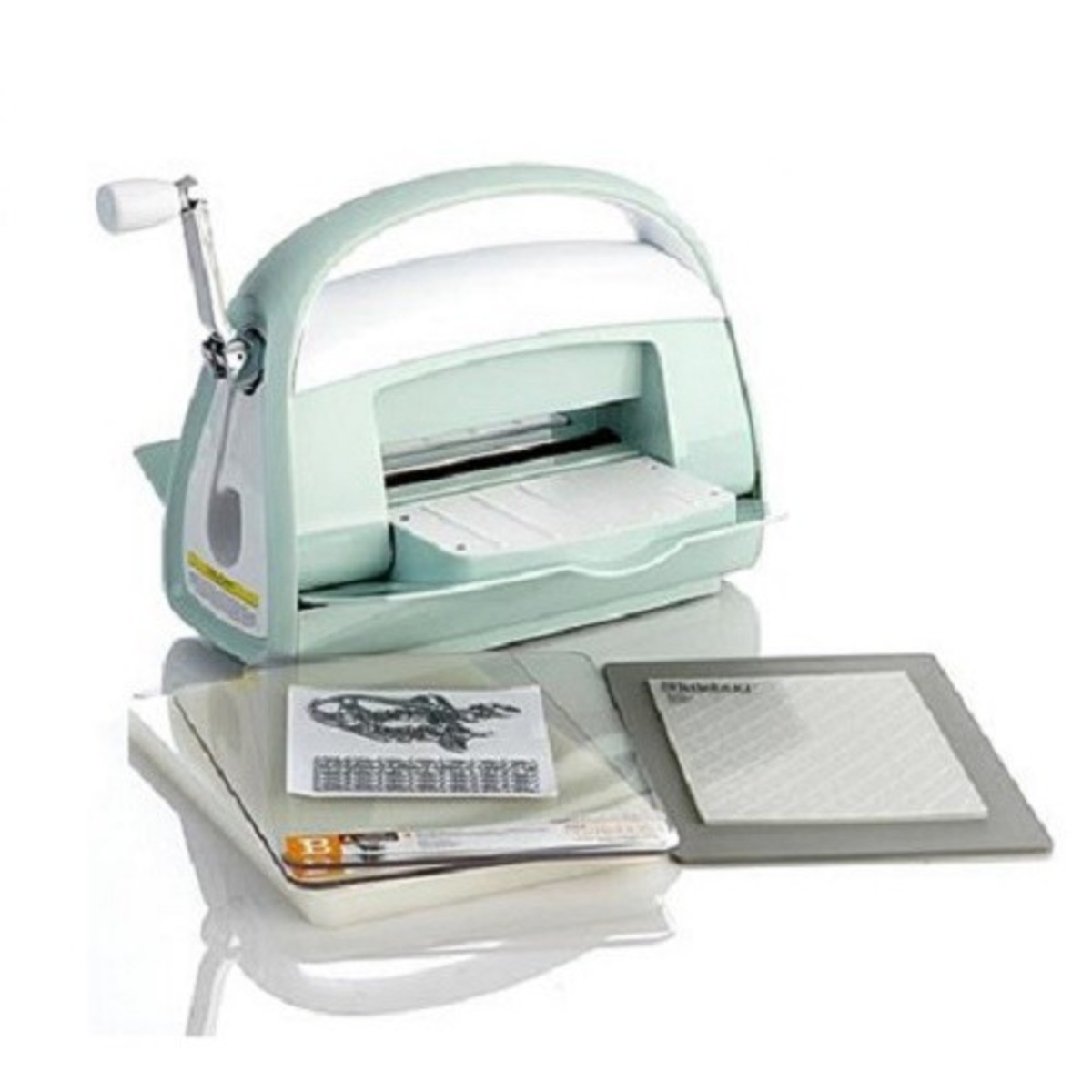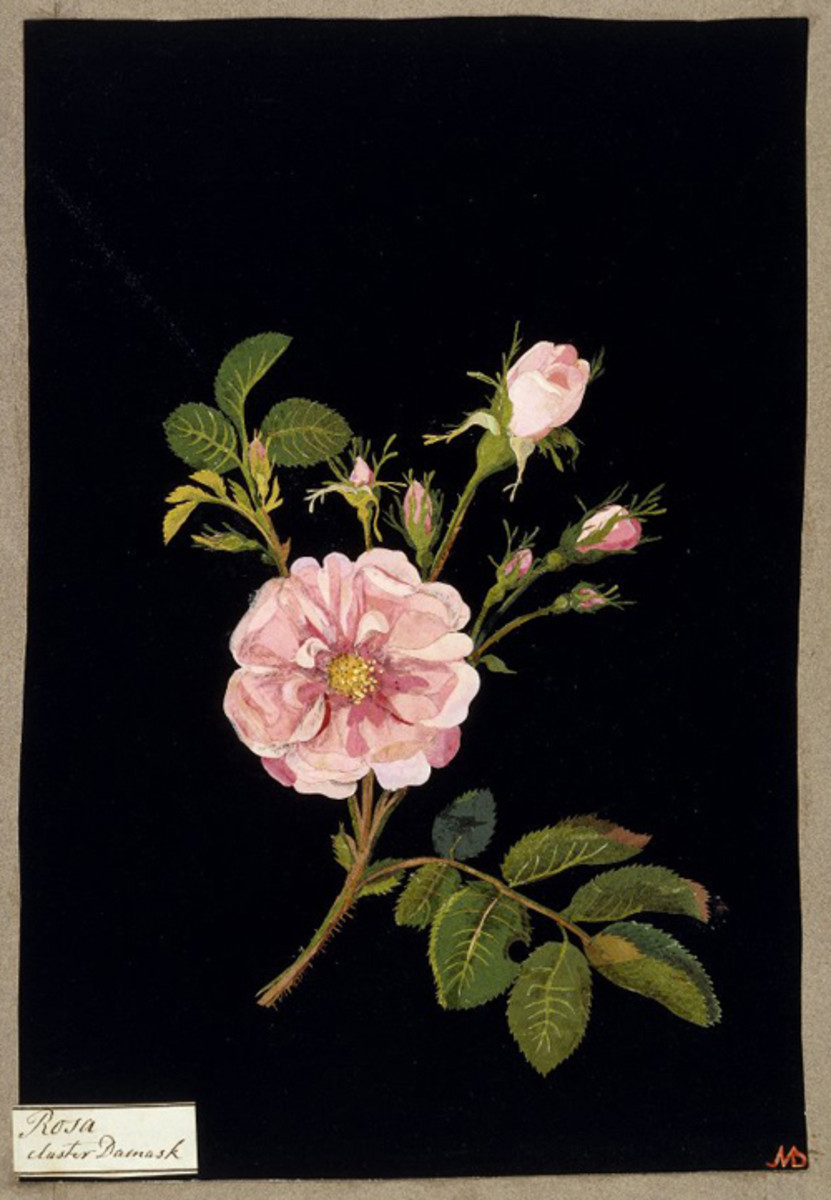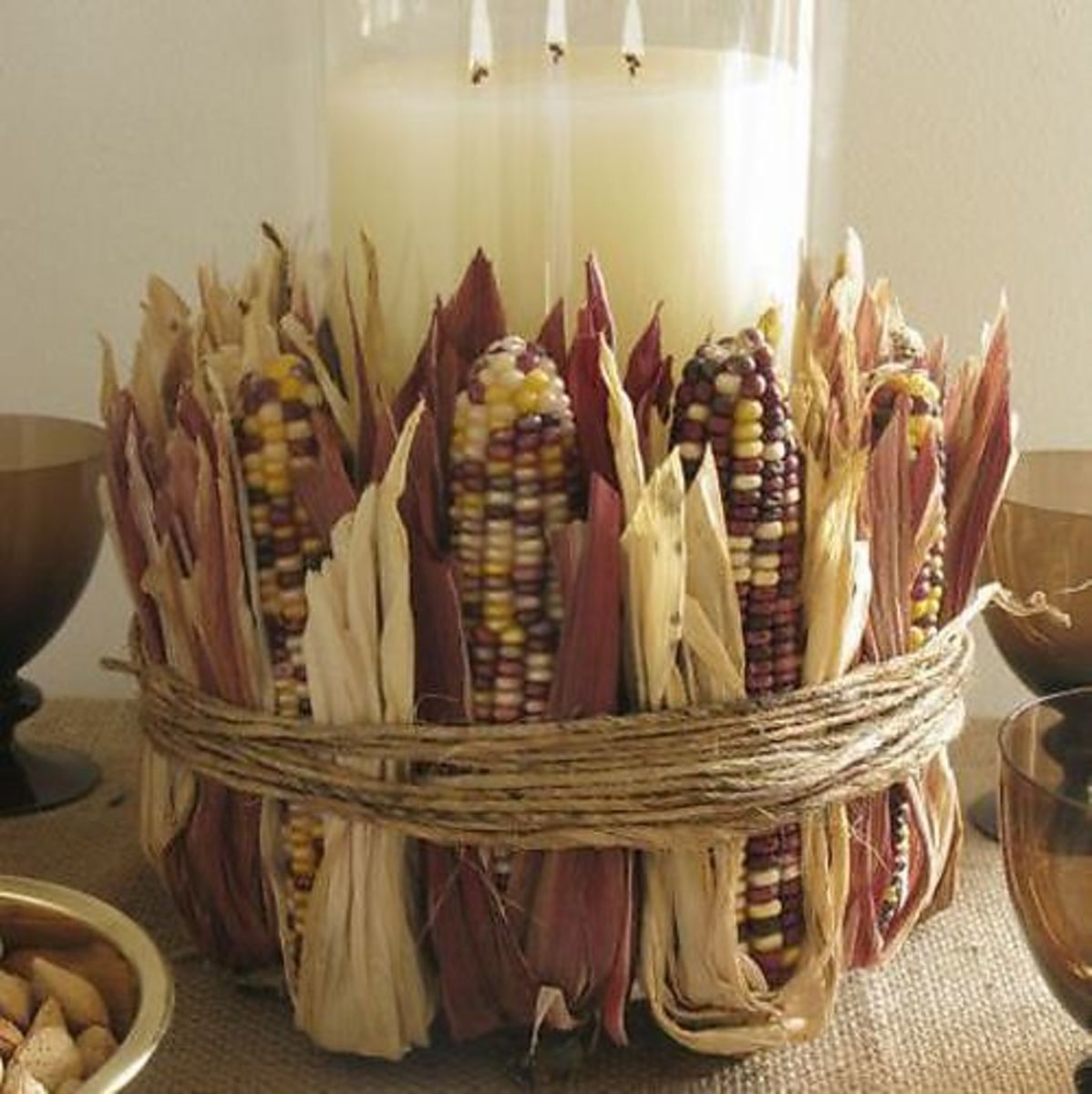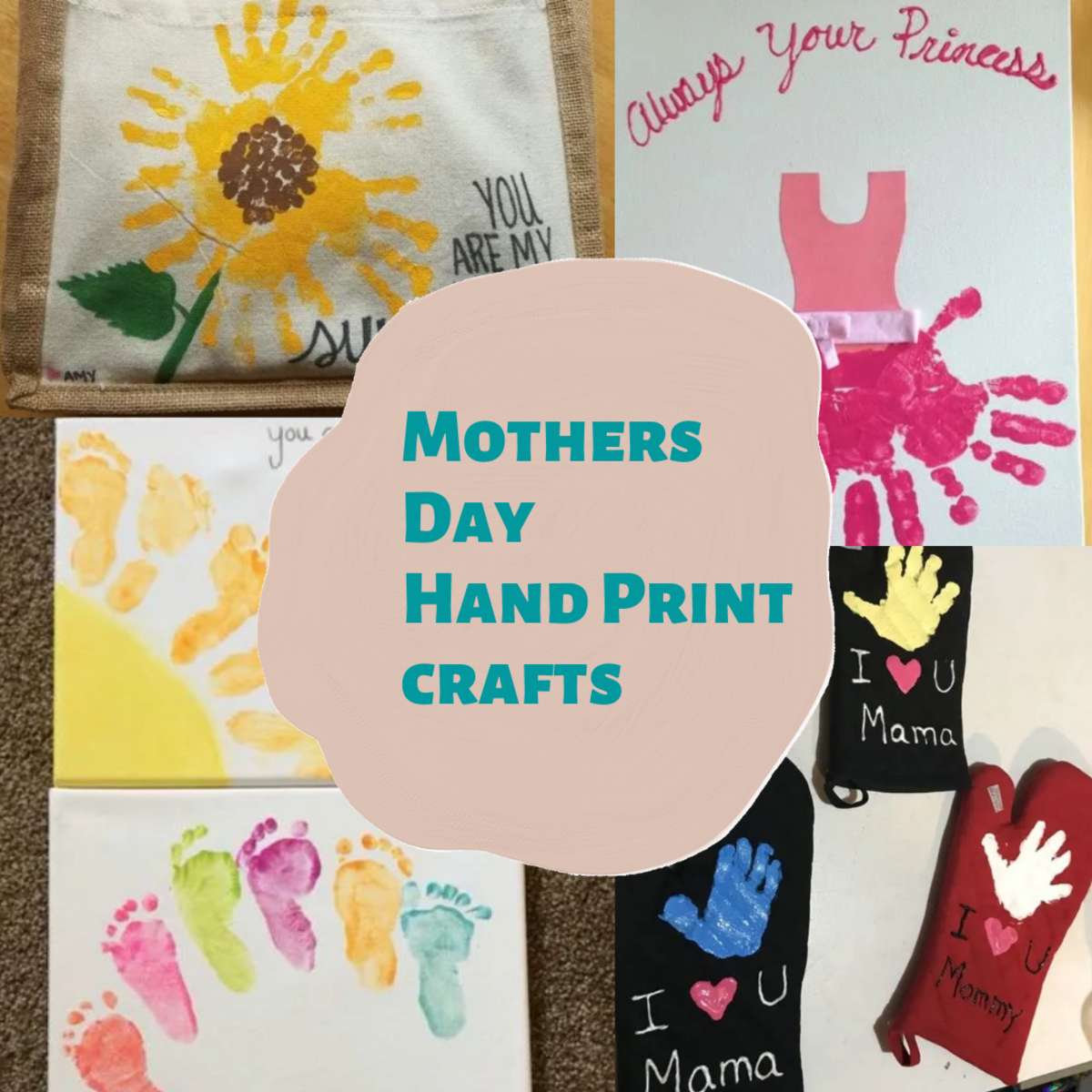Decoupaging Tips for Working With Paper and Fabric
Cloth Flowers Applied to a Claw Foot Tub With a Sparkly Mod Podge
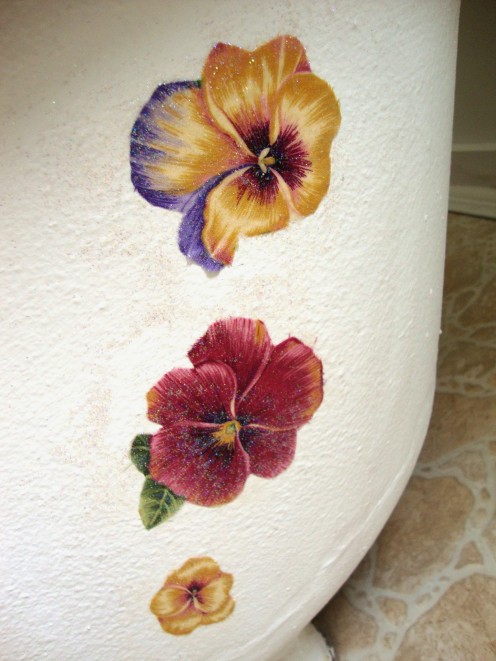
Turning Ordinary Into Extraordinary
The art of decoupage is easy to master and even more surprising, easy on the budget. Strips, scraps or cut-outs of different materials can be applied to household objects using a decoupaging medium. The results can be truly remarkable.
It can be incredibly creative and gratifying to give tired-looking items a facelift by recycling material scraps in tandem with a decoupaging medium, to transform them into stunning decor pieces.
Almost any surface or object can be decoupaged, which means that household items such as vases and canisters, picture frames and light switch covers, trays and small boxes can be given a new look. Stools and small tables make good objects for decoupaging, especially if these are showing signs of wear. Moldings and door panels, newel posts and vintage tubs can also be decoupaged.
This article will discuss which material scraps to use, tricks for surface preparation, cutting tips, how to achieve different effects, the types of Mod Podge, and how to protect your finished work.
Stunning Results
Materials to Get Started With Decoupage
- Scissors
- Small craft knife
- Tweezers
- Brush
- Brayer or small plastic scraper
- Paper or fabric material
- Mod Podge Decoupage Glue
- Damp cloth
Decoupaged Stool
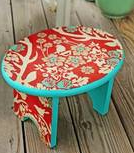
Getting Started
Instead of discarding everyday materials, start collecting these. You can use magazines, left-over wrapping paper and cards, tissue paper and napkins, or fabric.
The possibilities are endless for creative decoupage ideas. Some decoupagers use gold leaf paint effects or apply raised cut-outs for three dimensional effects. Use of textured materials such as lace or paper doilies produces a filigree effect.
Once you get into decoupaging, you will start viewing surplus materials in a whole new light and considering if they could be used to fancy up some surface, an object or a piece of furniture.
Surface Preparation Tips
- Surfaces to be decoupaged should be clean and free of dirt or grease.
- Smooth surfaces may need a light sanding to prepare them before applying paper or fabric cut-outs. In most cases, a fine grit sandpaper is all that is needed.
- Wood surfaces should be inspected for dents and protrusions and these should be filled or eliminated before proceeding. All surfaces should be clean, free of grease, and should be dry.
Household Objects Are Transformed With Decoupaging
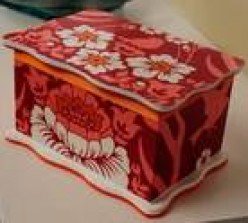
Materials & Effects Tips
- Tissue paper is an excellent material for decoupaging, lending a delicate beauty to surfaces.
- A textured effect can be produced by crinkling paper before decoupaging. (This works well with tissue paper.)
- Wallpaper books offer a wonderful variety of paper designs.
- Photos: it may be preferable to use copies of photos to prevent ink running or smudging, which can occur with printed photos produced via ink jet printers.
- Fabric: surplus fabric scraps can be saved and used for decoupaging.
Cutting & Edge Tips
- Cutting: scissors can be used for most cuts but for precise cuts, a small-bladed utility knife may be preferable for intricate edges. Small manicure scissors can also be used for tricky curved areas.
- Filigree Effect: a paper doily or paper lace can be used to produce a filigree effect. These paper items are already cut out in intricate designs.
- Edges: to produce interesting-looking edges, paper can be torn. This is particularly effective if the edges are to be painted out or if paper cut-outs will overlap. Torn edges lay flatter and will blend better. A neat decoupaging tip: use pinking shears for zigzagged edges.
A Brief Look at Mod Podge and How it Developed into The Medium of Choice for Decoupaging
From humble beginnings in a garage, Mod Podge has become a favorite decoupage glue for crafters--a versatile product that offers ease-of-use and consumer value.
In the 1960s, Jan Wetstone developed Mod Podge (commonly known as Modge Podge), a non-toxic all-in-one glue/sealer that would take modern decoupage to a whole new level.
At the time, decoupaging was all the rage. This craft method involved layering of thin materials, such as paper or fabric onto any number of surfaces and sealing them in. Traditional methods of decoupaging, however, were time consuming and labor intensive because layer upon layer of varnish had to be applied, and then sanding done, between coats.
Jan, who was the owner of an interior design shop, believed there had to be a better way. She set to work to create a decoupage medium that would serve as an all-in-one glue, sealer and finish, thus Mod Podge or Modge Podge, was born. The name was derived from the term "modern decoupage."
Customers saw Jan's prints and demanded that she reveal the secrets of her decoupage glue. Jan began offering Mod Podge kits in her shop, which was met with an enthusiastic response--so much so that her invention was later picked up by a major department store.
Working With Mod Podge
Mod Podge not only glues paper or fabric material but can be brushed over finished projects for a protective top coat and to lend a finished look.
As a decoupage glue, it is acid free and thus easy to work with, and clean-up is easy with soap and water.
Mod Podge comes in a variety of finishes to suit different applications.
Water-based Mod Podge dries clear and offers a durable finish. As a sealer, it protects paper and fabric and can be used when working with natural materials, such as pressed flowers.
There is a Mod Podge Perfectly Suited for Every Task
Before you begin decoupaging, it is a good idea to become familiar with the many different kinds of Mod Podge available, which can make a big difference to the look of your project.
- Classic--Classic Mod Podge is a favorite decoupage glue, an all-in-one product that can be applied to varied surfaces.
- Brush Stroke--provides a textured finish, good for cards, posters or pictures. This is a nice medium for making pressed flower cards or pictures.
- Satin--Satin offers a nice-looking finish to decorative items.
- Hard Coat--durable decoupage medium, perfect for items that see frequent handling or wear. Hard Coat can be used on furniture.
- Fabric--to embellish fabric items such as scarves, table runners, bags, t-shirts, hats or denim material. What an easy way to affix something to cloth, without having to sew it on.
- Paper--acid-free Paper Mod Podge is suitable for scrapbooking and card making. Paper Mod Podge preserves copies of photos and protects paper from yellowing.
- Shimmer--Shimmer gives projects a unique look, adding a hint of gold or silver.
- Sparkle--Sparkle Mod Podge is a good choice for projects created for festive occasions and lends a nice touch when making jewelry.
- Glitter--Glitter is a fun decoupage medium, adding a metallic look.
- Glow-in-the-Dark--a favorite with young crafters, Glow-in-the Dark can be applied to bedroom objects or used for Halloween projects.
- Puzzle-Saver--Puzzle-Saver Mod Podge can be used to preserve completed puzzles. what a great idea if you have a favorite puzzle you want to turn into a picture.
- Outdoor--a decoupage medium that protects against moisture. The water resistant finish can be used to protect decorative objects against the elements.
Tips for Application & Finishes
- A small foam brush can be used to apply decoupage glue to surfaces and to the backs of cut-outs. Ensure that all areas are completely covered with glue so that cut-outs adhere uniformly. Work from the center, outwards.
- If bubbles form these can be eliminated by using a can of air or piercing with a pin or wooden popsicle stick.
- Layers: allow each layer to dry completely before adding the next layer.
- Different decoupaging mediums can be used to achieve matte, glossy, a shimmered or a brushed look.
- A durable decoupage medium such as Hard Coat Mod Podge or a clear acrylic sealer will protect finished surfaces.
Tips for Perfect Results
- Before brushing on decoupage medium, arrange paper or fabric cut-outs onto surface or object to get an idea of the look to be achieved. This is the time to experiment and decide on how you want something to look.
- Brush decoupage glue onto object to be decorated or brush it onto backs of actual paper or fabric cut-outs.
- Press cut-outs onto surface and, if necessary, use a brayer or scraper to flatten and smooth out wrinkles.
- Continue applying cut-outs until surface area is covered.
- Use a damp cloth to wipe off extra glue and remove it from fingers.
- Allow cut-outs to dry thoroughly.
- Add additional layers of cut-outs if desired and glue these to the bottom layer.
- Seal in design by applying decoupage medium.
- Continue applying layers of decoupage medium, allowing each layer to dry before applying the next coat. Continue until object no longer shows edges.
- Allow decoupaged object to dry thoroughly before using.
Recommended
A good book on decoupaging can be invaluable, not only for the step-by-step instructions but also, the photos can be a great inspiration for ideas for future projects.
Flawless Results
Decoupage crafting takes minimal time and effort, doesn't cost the roof, and yet yields such rewarding results. Equipped with a little know-how, you'll be set to produce a better looking end-product.
© 2013 Athlyn Green


